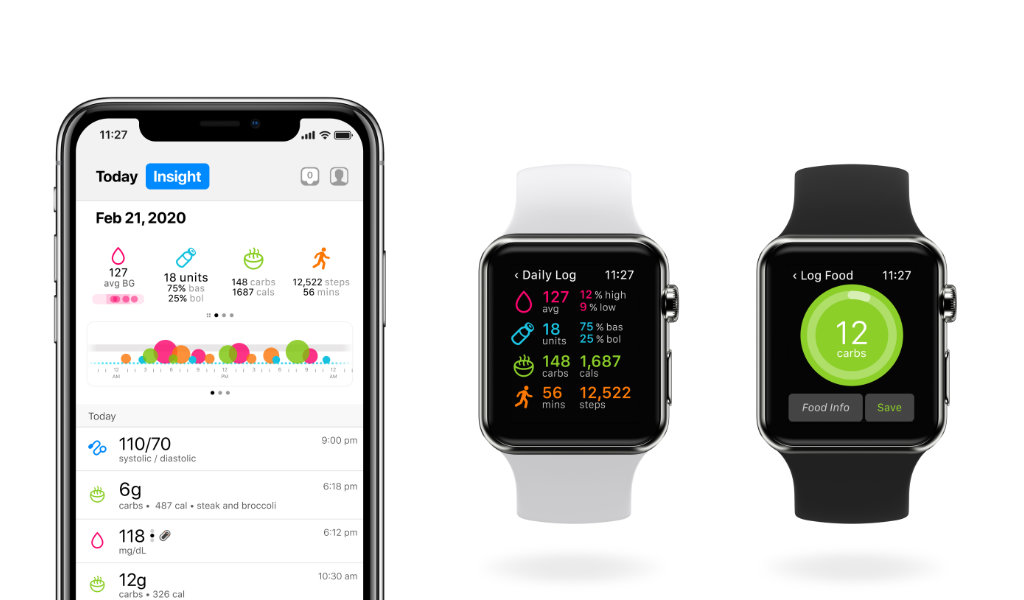5 Pillars for Building Healthtech Products
UX and other principles to deliver safe and meaningful outcomesIn the dynamic realm of healthtech, where innovation merges with critical user needs, the role of a product designer is pivotal. Designing for healthtech products goes beyond aesthetics; it demands a deep understanding of user behavior, complex regulations, and a commitment to enhancing people’s well-being. If you’re a product designer, UX practitioner or even a PM in healthtech, here are five key pillars to consider.
1 Empathy-Driven Design

At the heart of health tech design lies empathy for the users – often individuals facing health challenges. A prime example of empathy-driven design is the “One Drop“ diabetes management app. This app not only tracks blood glucose levels but also offers personalised insights, peer support, and expert advice, acknowledging the emotional and mental aspects of diabetes management. By addressing both medical data and emotional well-being, One Drop showcases how empathy-driven design can enhance user experiences.
💡 Carry out robust primary research to find out the real pain points of users. In healthtech, the layers of worry and expectations of users are complex and nuanced. You’ll need to dig deep to uncover themes that reassure users and also convey trust.
2 Compliance and Ethics
Complying with health regulations and maintaining ethical standards is crucial in health tech. The “PillPack“ by Amazon, which streamlines prescription management, exemplifies this. PillPack adheres to strict regulations, ensuring the safe and accurate delivery of prescription medications while prioritising patient privacy and data security. Its design emphasises the ethical responsibility of protecting sensitive health information.
💡 When building product design processes, a catch all for legal and medical compliance should be baked in. This allows for constant iterative input from the medical and legal teams so that the organisation can adjust quickly. Proceed in unison across your teams and you’ll save time, gain trust and deliver better outcomes.
3 Human-Centred Information Architecture
To create user-friendly information architecture, look no further than “Healthily“. This health information platform presents complex medical content in a digestible manner. Its clear categorisation of medical topics, symptom checkers, and user-friendly navigation simplify the process of finding relevant health information. By organising medical content thoughtfully, Healthily caters to users seeking reliable health advice.
💡 At Healthily we built out an architecture centred around the most common user-led queries: nutrition, activity, mind and sleep. In addition to content, Healthily also offers a deep dive into symptom checking via DOT, the AI driven health chatbot.
4 Seamless Data Visualisation
“Fitbit“ is a prime example of a healthtech product that excels in data visualisation. The Fitbit app presents users with intricate fitness and health data in an easily digestible format, such as step counts, heart rate trends, and sleep patterns. These visualisations empower users to make informed decisions about their health and track their progress effectively.
💡 Data viz is great but remember to keep it simple. Examine Apple’s Health app or fitness apps and you’ll see a super simplistic approach to data visualisation that allows for at a glance information without overwhelming the user.
5 Continuous Iteration and Feedback
The “MyFitnessPal“ app showcases the importance of continuous iteration. This app allows users to track their diet, exercise, and weight. Over time, it has evolved based on user feedback, adding features, refining the user interface, and integrating new technologies such as barcode scanning for food tracking. This commitment to improvement ensures that the app remains relevant and valuable to users.
💡 Be sure to align your QA teams with your design teams. MyFitnessPal has suffered technical challenges lately after building in more features. This has delivered, on occasion, a sub-par user experience as noted by many critical app store reviews. Remember: Healthtech requires going above and beyond for users as they are often stressed, time-poor and have high expectations of a medically validated product.
Product design in healthtech is as challenging as it is rewarding. The intersection of user experience and health requires a delicate balance of empathy, compliance, and innovation. By drawing inspiration from real-world examples you can leverage the pillars above to create health tech products that positively impact users’ lives.
I cannot stress the importance of detailed primary research when building your healthtech products. Deep segementation of users and further categorisation of their unmet needs is essential to ensure that you deliver meaningful, safe outcomes. In addition to the pillars outlined above you’ll need to ensure superlative cross-team colllaboration. Involve your legal and medical teams in product workshops, keep everyone informed. This means that when you face any challenges at market you have a series of breadcrumbs that may help to unravel any issues.
If you would like an audit of your current processes or product get in touch.